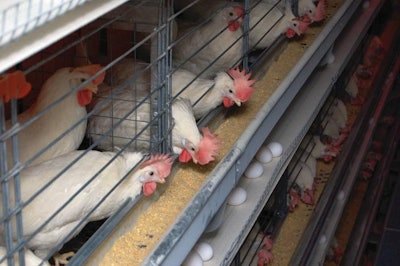
The poultry sector, already a primary driver of feed industry growth, stands to boom in the face of African swine fever (ASF). But poultry producers also face pressure from increased regulatory oversight, and public opinion may be shifting.
Poultry production, which drives demand of nearly half of global feed production, continues to enjoy steady growth, thanks in no small part to growing consumer demand. Alongside its perception as a health food among consumers, the poultry sector has thus far absorbed much of the lost demand for pork in China and other regions affected by ASF.
Overall production of feed for poultry in 2018 increased 2%, and the product of feed for layers specifically grew 4% globally thanks to rising consumer interest in eggs as a source of protein.
Brazil is the one exception to this success story. The Latin American country saw broiler production decrease in 2018 by 2%, according to the 2019 Alltech Global Feed Survey, due to rising corn and soybean prices. Forecasts anticipate that growing international exports and a rising economy will enable the Brazilian poultry industry to recover in the coming months. Shifts in international trade are also expected to bolster production in the EU.
Growth has brought unique challenges to poultry producers. Rapid advances in genetics, nutrition and technology have enabled producers to grow their flocks. Keeping up with this industry disruption “presents an exciting opportunity,” according to Kayla Price, a Canadian poultry technical manager at Alltech. But the integration of these technologies also requires careful management, she said.
Growth has also attracted attention from regulators, triggering scrutiny of the poultry industry and particularly its use of antibiotics in feed, which have been banned by an increasing number of jurisdictions.
“With any change, there is a learning curve and, as we move forward, more focus is being put on gut health management of the flock,” Price said. “Gut health management strategies include building a program that combines effective biosecurity, health measurements and nutrition management.”
In the U.S., feed producers are bracing for the full implementation of the Food Safety Modernization Act, which will require inspections at facilities of all sizes come September.
“We are trying to learn as much as we can from those inspections from our membership,” said Leah Wilkinson, vice president of public policy and education at the American Feed Industry Association. “We’re asking for feedback so we can turn around and educate members on what FDA is looking for and how they are interpreting that in the field.”
Consumers, also, are increasingly concerned about food safety as well as sustainability, Price said, which has driven an interest in learning where and how food is produced. While this public scrutiny comes with challenges, Price and others also see it as an opportunity to “ensure trust in how food is grown” through outreach activities.

















